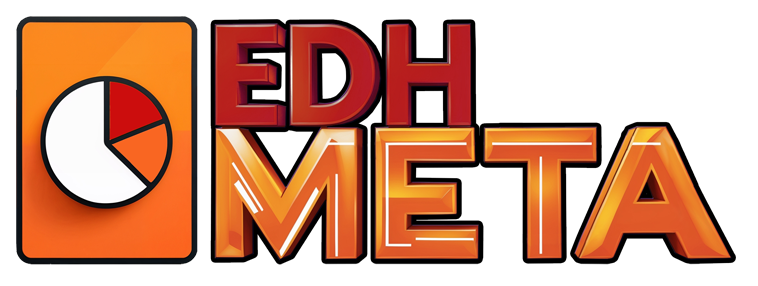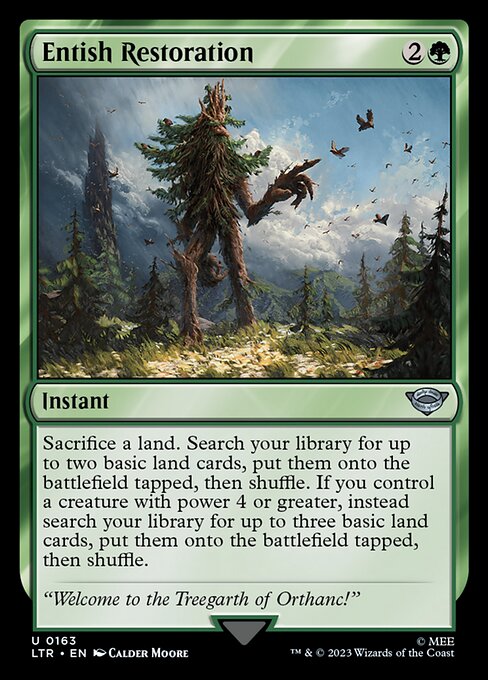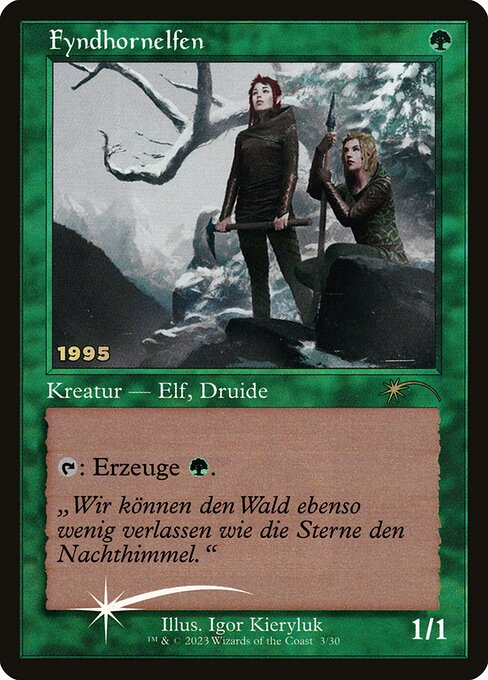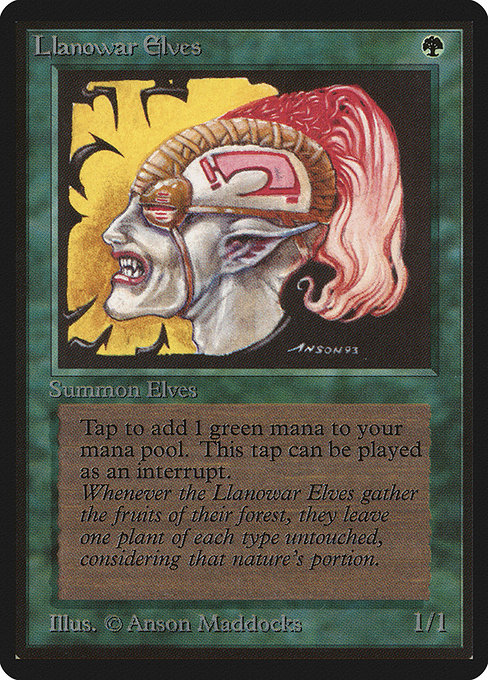What is like to play Green ?
If white is about order and fairness, then green is the color that tells you to stop overthinking and just grow. It’s the color most in tune with the natural world-plants, predators, cycles of life and death and it carries that philosophy straight into Commander. While other colors bend, shape, or manipulate the battlefield, green insists the world is already perfect. Why force it, when all you have to do is let nature take its course?
That attitude shows up everywhere in green’s design. Ramp is growth. Big creatures are evolution. Graveyard recursion is the endless cycle of life and death. Even green’s card draw usually requires you to already have creatures on board because knowledge doesn’t come from books, it comes from experience. Green has no patience for illusions, tricks, or artifice. Its greatest grudge is against what is “unnatural”: artifacts, artificial constructs, and the trappings of overbuilt civilizations. If white builds castles and blue builds libraries, green would just as soon tear them down and let the forest reclaim the ruins.
And yet, for all its primal energy, green isn’t just smash and stomp. It has its own subtleties synergies with lands, communities of elves, and fog effects that frustrate aggressive tables. Green is simple in theory, but in practice, it has as much depth as the root system of a thousand-year-old oak.
Titania and the World of Lands
Let’s start with one of the best ways to show off green’s love for natural cycles: Titania, Protector of Argoth. If white was about playing threats on curve, green’s equivalent is ramping and sacrificing lands until the battlefield erupts with elementals.
Titania’s synergy web is deep and dirty. Sacrificing lands to roiling regrowth , harrow , or entish restoration doesn’t feel like a downside when each one summons a 5/3 elemental.
Edge of Autumn turns into both ramp and a token-maker. And then there’s the meaner side of Titania, pairing her with Smokestack to keep everyone else’s resources down while yours turn into threats, besides, there are plenty of cards to help you recycle your lands for example here we have another presentation of our commander but personified in a slightly different card titania, nature's force
Also looping Constant Mists so combat damage never touches you or even feeding your graveyard to find either more land drops or just to keep generating value with cards like life from the loam and scapeshift It’s the perfect example of green’s philosophy: the land is life, and life is endless.
What makes Titania decks frustrating to play against is that they never look scary at first. “Oh, just sacrificing some lands, what’s the big deal?” And then suddenly there’s a field of 5/3s staring everyone down, and you realize that nature doesn’t need a plan, it just grows until it swallows the whole board.
mtgazone. com/user-decks/ggslnh3kwmkomjandtu
Community, Growth, and elves
Green also values community, not in the structured, law-driven way that white does, but in the raw, organic sense of a group working together. And nothing embodies that better than elves.
Take Nissa, Resurgent Animist. At first glance, she looks like another value engine stapled to a body. But in an elf deck, she becomes a value engine. Every land drop can trigger mana production, every creature synergizes with the next, and before long the board state looks like a forest floor—teeming, tangled, and impossible to parse. Traditional elfball in Commander is terrifying because it follows the same principle as a real ecosystem: everything grows together, and the result is exponential.
In this particular deck we are going to play a lot of fetch-lands. This maintains a kind of synergy like with Titania, but now it has a different use here, instead of immediate value, we want gas, our commander aids us because every single one of those lands will become a new creature.
Elves are known for generating large amounts of mana very quickly, whether it’s a finite number like our favorite triad elvish mystic, fyndhorn elves and llanowar elves OR aiming to get larger amounts with cards like marwyn, the nurturer, wirewood channeler, priest of titania and many others.
The beauty and the salt come from the same place. Opponents watch you play a few harmless one-drops, then suddenly realize they’re facing a dozen creatures, plenty of mana and a Craterhoof Behemoth waiting to resolve. Elfball isn’t subtle. It doesn’t trick you. It just grows bigger, faster, and more explosively than anyone else, and dares the table to keep up.
mtgazone .com/user-decks/vcvx2lfyteouk30fba6
The Instinct of the Beast
For all of its growth and synergy, green has a weakness: it trusts too much in instinct. Where blue thinks, green reacts. That makes it vulnerable to trickery and deception, and it explains its distaste for magical creations and artifice. But instinct isn’t always a flaw, it is also a weapon.
Enter Questing Beast. On its own, it’s already infamous: an overloaded text box strapped to a hasty 4/4. But as a commander, Questing Beast takes on a completely different flavor. It becomes the centerpiece of a fog strategy. That’s right, green, the color of smashing face, turns into the color of saying “nope, combat damage doesn’t happen today.”
Pair Questing Beast with cards like Dawnstrider, Leery Fogbeast, Arachnogenesis, and yes, Constant Mists (again), and you’ve built the most aggravating fortress imaginable. Opponents think they’ve calculated lethal, they swing in confidently, and then their entire attack fizzles into mist. Meanwhile, the Beast sneaks through with unblockable chip damage, whittling away life totals turn after turn.
Don’t overlook this small and insignificant detail “Combat damage that would be dealt by creatures you control can’t be prevented.” This makes the fog practically a removal.
It’s cruel, it’s petty, and it’s hilarious because green’s philosophy of “letting nature take its course” suddenly looks a lot like “letting you exhaust yourself while I do my thing.”
mtgazone .com/user-decks/jry7z4pndc5bzeb0qp7i
Wrapping It All Up
So what does it really feel like to play green in Commander?
It feels inevitable.
Green doesn’t just play the game, it becomes the game. Lands, creatures, communities, recursion, everything green does is about creating a self-sustaining ecosystem that outlasts whatever the other colors are scheming. White talks about fairness, blue obsesses over knowledge, black chases ambition, and red runs on passion. Green doesn’t care about any of that. It just grows, over and over, until it wins.
That doesn’t mean green is invincible. Its reliance on instincts can leave it wide open to trickery. Its disdain for artifacts and “artificial” power sometimes blinds it to strategies that sidestep the battlefield. But when green works, it doesn’t just win, it overwhelms. Titania floods the board, Nissa turns a community of elves into a juggernaut, Questing Beast quietly dismantles combat math until the game is already over.
And perhaps that’s the real heart of green: inevitability dressed up as simplicity. It doesn’t need fancy combos or intricate politics. Nature doesn’t ask for permission. It grows because it can.
So the next time you sit down at the Commander table and someone flips over a green commander, don’t make the mistake of thinking it’s just “big creatures and ramp.” Remember that ecosystems don’t look dangerous until they’ve already swallowed you whole.





























